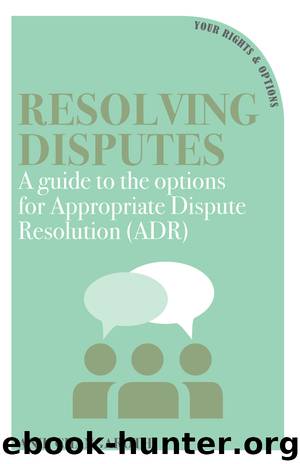Resolving Disputes by Anil Changaroth

Author:Anil Changaroth
Language: eng
Format: epub
Publisher: Marshall Cavendish International
See consolidated table in the Annex for comparison of mechanisms.
General Overview of Dispute Boards1
Dispute Boards (“DBs”) in large-scale projects involve a board of independent persons who are appointed to review the progress of the project and consider issues that may have arisen, with the aim of avoiding disputes or minimising their impact by pre-empting disputes before they arise, and when they do arise, to deal with them quickly and effectively.
DBs have been used actively since 1975 on heavy engineering projects such as tunnels, airports, toll roads and power plants. There are a variety of types of dispute boards, as described below.
The brief history of DBs is as follows (in chronological order):
a. the DB was first used as a dispute resolution mechanism in the Eisenhower Tunnel project in 1975 in the USA in the form of a Dispute Review Board (“DRB”);
b. the first DB outside of the USA was utilised for the World Bank hydro-electricity power station project in Honduras (1981);
c. DBs were mandated for all World Bank projects in excess of US$50million since 1995;
d. DBs were included in the FIDIC (the International Federation of Consulting Engineers) Standard Form Contracts since 1999;
e. the International Chamber of Commerce (“ICC”) also came up with their own DB Rules in 2004; and
f. nine multilateral banks adopted DBs in 2006.
Large multi-discipline/contract projects sometimes require a larger pool of panels from which a panel of one or three or more members can be selected.
Download
This site does not store any files on its server. We only index and link to content provided by other sites. Please contact the content providers to delete copyright contents if any and email us, we'll remove relevant links or contents immediately.
How to Stop Worrying & Start Living by Dale Carnegie(1390)
Bound by You(1191)
You're Not Listening by Kate Murphy(1177)
How to Talk to Anyone by Leil Lowndes(1175)
Limitless: Upgrade Your Brain, Learn Anything Faster, and Unlock Your Exceptional Life by Jim Kwik(1090)
The Essentials of Business Etiquette by Barbara Pachter(1086)
The Victorian Internet by Tom Standage(1077)
The Attention Merchants by Tim Wu(1051)
The Art of Public Speaking by Dale Carnegie(1047)
Sizing People Up by Robin Dreeke & Cameron Stauth(925)
Powerful Phrases for Dealing with Difficult People by Renèe Evenson(840)
The Art of Community by Bacon Jono(765)
Design For How People Learn (Eva Spring's Library) by Julie Dirksen(754)
Art of Captivating Conversation by Patrick King(748)
True Story by Michael Finkel(720)
The Art of Speeches and Presentations by Philip Collins(714)
Marissa Mayer and the Fight to Save Yahoo! by Carlson Nicholas(698)
Becoming Facebook by Mike HOEFFLINGER(697)
The Presentation Secrets of Steve Jobs by Gallo Carmine(692)
